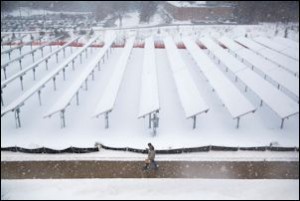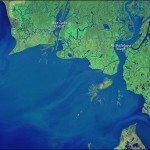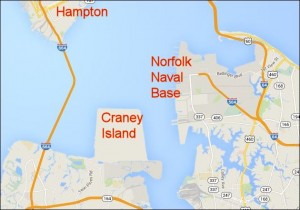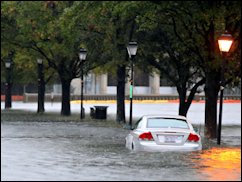by James A. Bacon
From the oceans to the rain forests, from the wetlands to the Virginia Piedmont, wildlife habitats around the world are under tremendous pressure from human activity. One reason that environmentalists get alarmed about global warming is that a rapidly changing environment adds one more source of stress to many species. In a pre-human environment, species would respond to a warming climate in Virginia by migrating north. But human activity — cities, farming, subdivisions, roads, railroads and power lines — fragments wildlife habitat and creates barriers to migration.
Human pressure is causing one of the greatest mass extinctions of species the planet has ever seen. But not everyone gets weepy at the prospect of demise of the Littlewing Purleymussel or Rock Gnome Lichen, endangered species here in Virginia. Some people say, “So what? What’s it to me?”
There is tremendous unrecognized value to biodiversity, Healy Hamilton, chief scientist with NatureServe, argued in a session yesterday at the University of Richmond that preceded the meeting of the Climate Change and Resiliency Update Commission. Just to mention those species that are directly useful to humans, she said 30,00 plant species have edible parts; 7,000 are used as foods. Forty percent of all medicinal drugs come from plants, animals or micro-organisms. Timber, firewood, fibers, rubber and biofuels, all derived from plants, are multibillion-dollar industries.
And that’s just for starters. Increasingly, scientists are turning to nature for solutions to engineering problems, a phenomenon called biomimicry. Nature and evolution have worked over billions of years to accomplish such tasks as enhancing flow without causing friction, or creating light, flexible materials. The greater the number of species in existence, the greater the number of potential solutions.
While there is value to preserving individual species, there also is value to preserving ecosystems. Hamilton referred to “ecosystem services,” or tangible economic benefits that ecosystems provide humans. Pollinators like bats and bees contribute roughly $30 billion a year in services nationally to agriculture and landscaping. Coastal wetlands provide billions of dollars annually in storm-surge protection. Nature provides billions of more of value in recreation and tourism. The inspiration upon arts and philosophy cannot be expressed in dollars.
Hamilton described biological diversity as “a magic carpet ride of life we don’t even know we’re on.”
Bacon’s bottom line: Of all environmental issues, the loss of wildlife habitat and biodiversity is one that bothers me most. When species go extinct, they are gone forever (unless someone figures out how to reconstruct a wooly mammoth from DNA, but re-creating one mammoth isn’t enough to resurrect the species). The greater the biodiversity of an ecosystem, the greater its stability. The loss of species makes the system more prone to debilitating perturbations, which, even if you care nothing about gray bats or dustytail darters, can impact those species (pine trees, corn, azaleas, whatever) that humans do care about.
The loss of wildlife habitat and biodiversity is real, it’s here, and it’s now. To me, it’s a lot more real than catastrophic climate change, an outgrowth of computer model forecasts that failed to see the current 17-year temperature plateau. (Yeah, yeah, I know I’m a heretic. Burn me at the stake!)
What I’m groping for here is the idea that biodiversity may be a patch of common ground where wild-eye climate alarmists and sober-minded skeptics (ha! ha! I’m just trying to goad LarryG and PeterG) can actually agree on something. While the two camps will likely disagree over the desirability of re-engineering the state’s energy economy, perhaps we can come together in promoting environmental resilience by buffering the impact of human activity on threatened species.
In the near future, I will explore some ideas generated by some bright University of Richmond students on practical ways Virginia can protect biodiversity from human threats of all kinds, whether climate change or humanity’s heavy footprint the landscape.



















